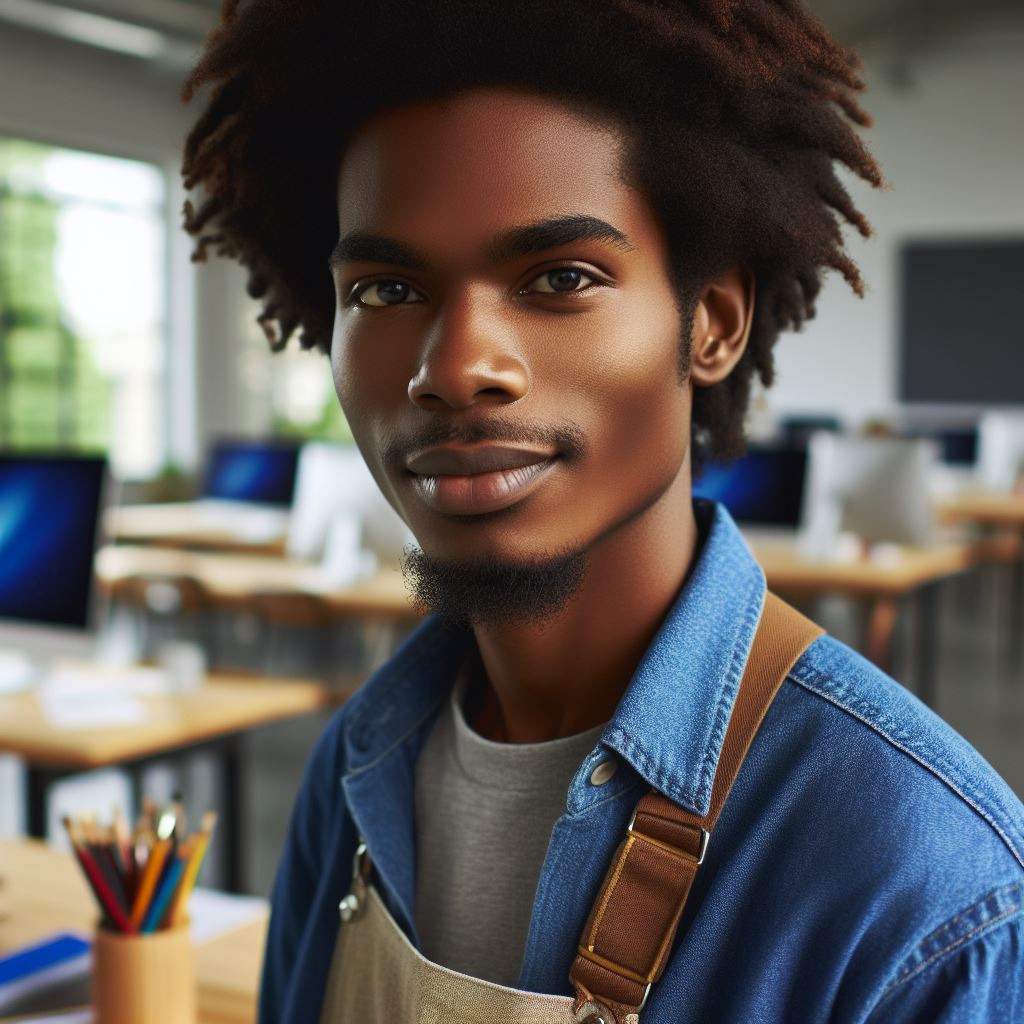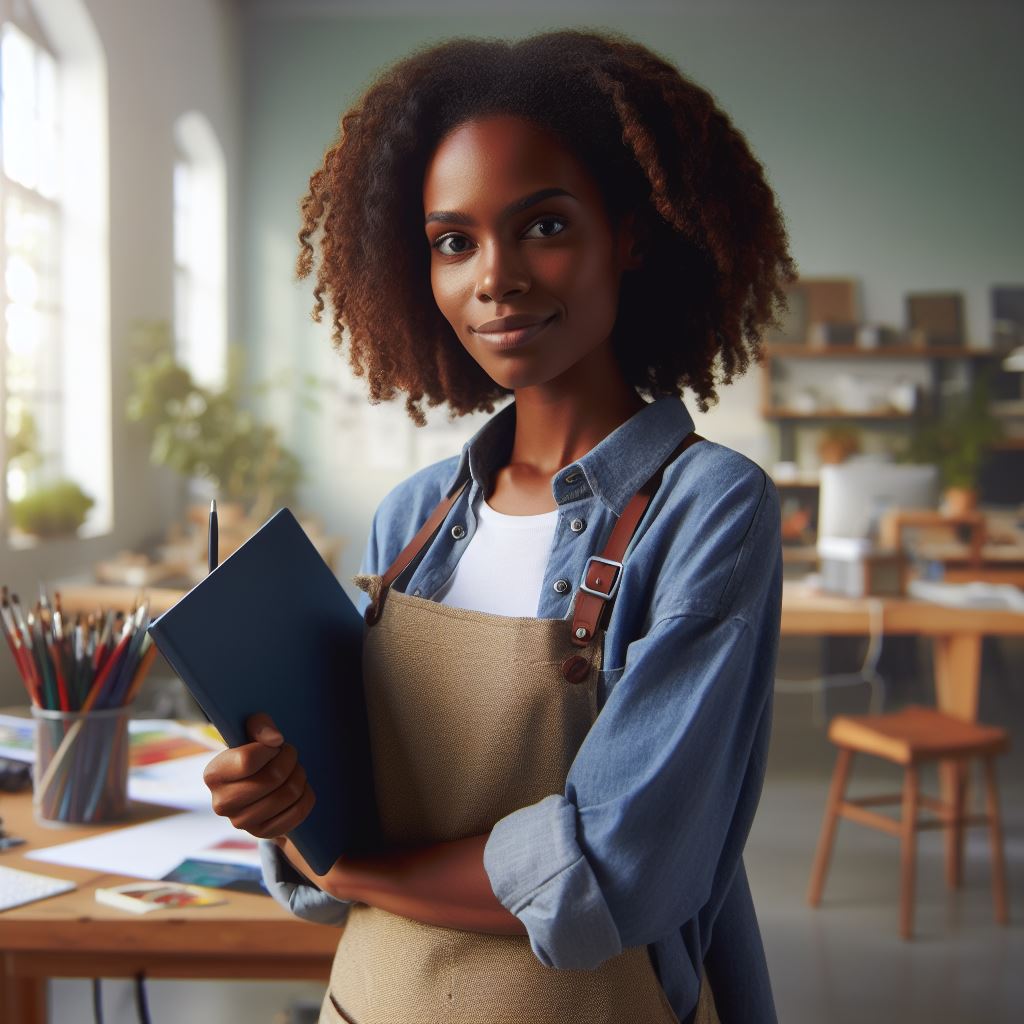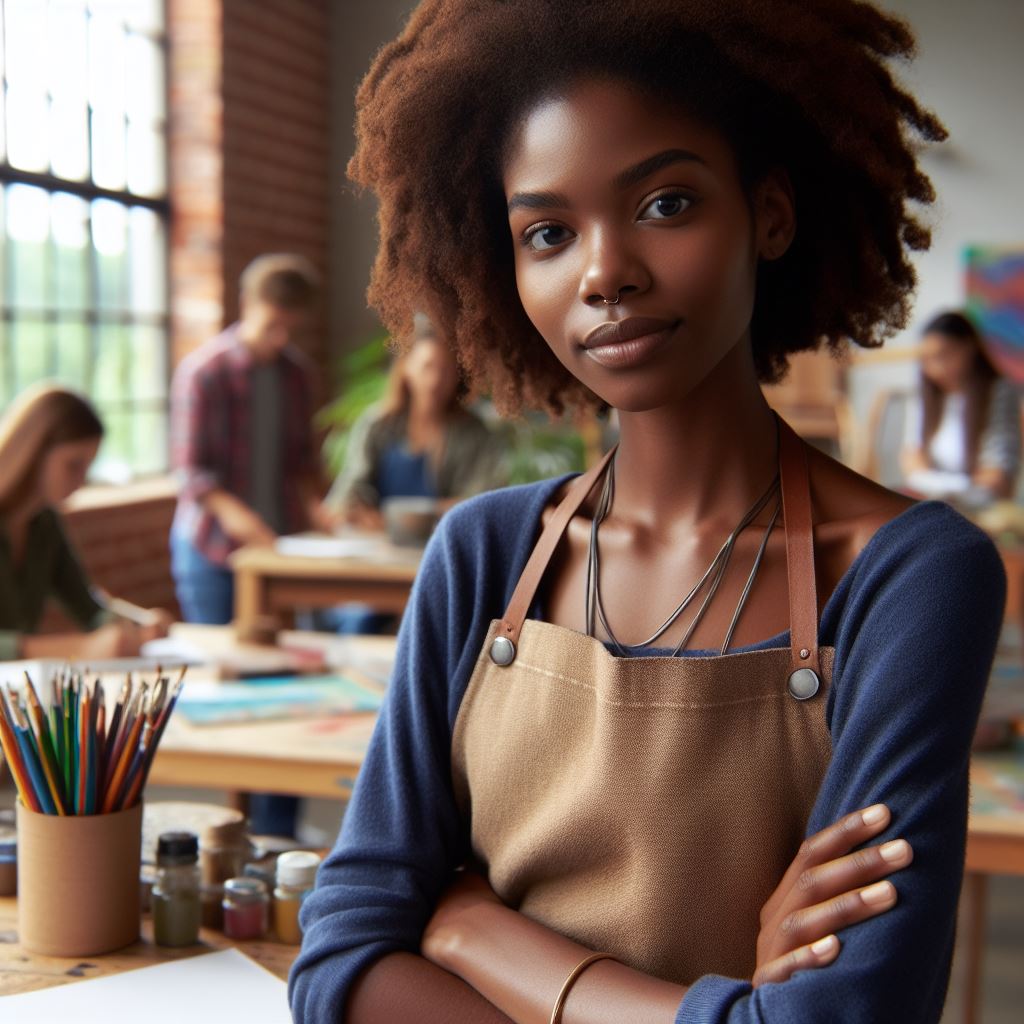Introduction
In Nigeria, digital art has a rich history that dates back to the early 2000s when artists started experimenting with new technologies in their work.
This form of art involves using digital tools such as computers, software, and tablets to create stunning visuals and designs.
Digital art plays a significant role in the Nigerian art scene, as it allows artists to express their creativity in innovative ways and reach a wider audience through online platforms.
This form of art has gained popularity in recent years, especially among younger generations who are tech-savvy.
Some popular Nigerian digital artists include Kelani Abass, Dipo Doherty, and Williams Chechet, whose works have been exhibited internationally and have received critical acclaim.
These artists use digital tools to explore themes of identity, culture, and social issues, bringing a fresh perspective to the Nigerian art scene.
Current Trends in Nigerian Digital Art
Latest Techniques and Tools in Nigerian Digital Art
Digital art in Nigeria has seen a surge in popularity in recent years, with artists utilizing cutting-edge techniques and tools to create stunning works of art.
Many Nigerian digital artists are embracing software such as Adobe Photoshop, Illustrator, and Procreate to bring their creative visions to life.
These tools offer a wide range of features that allow artists to experiment with different styles and techniques, from digital painting to photo manipulation.
Themes and Subjects in Nigerian Digital Art
Themes and subjects commonly depicted in Nigerian digital art reflect the rich cultural heritage and diverse landscapes of the country.
Some artists draw inspiration from traditional Nigerian motifs, such as Adire patterns, Yoruba mythology, and Igbo folklore.
Others explore contemporary issues such as urbanization, globalization, and environmental concerns.
The use of vibrant colors, intricate patterns, and bold compositions often distinguishes Nigerian digital art from other art forms.
Popularity of Digital Art in Nigeria
Digital art is becoming increasingly popular in Nigeria, thanks to the growing accessibility of digital tools and platforms.
Social media has played a significant role in promoting and showcasing Nigerian digital artists to a global audience.
Platforms like Instagram, Twitter, and Behance allow artists to share their work, connect with other creatives, and gain recognition from art enthusiasts around the world.
As a result, Nigerian digital artists are gaining more visibility and recognition in the global art scene.
In essence, the current trends in Nigerian digital art reflect a fusion of traditional motifs, contemporary themes, and innovative techniques.
With the growing popularity of digital art in Nigeria, the country’s artists are producing impactful and visually striking works that resonate with audiences both locally and internationally.
Read: Funding Opportunities for Nigerian Visual Artists
Impact of Technology on Nigerian Art
Technology has revolutionized the art scene in Nigeria, influencing both the creation and consumption of art in various ways.
Influence on Creation
Technology has provided Nigerian artists with tools and platforms to experiment with new techniques and styles.
The use of digital tools like graphic design software and tablets has enabled artists to explore innovative ways of expressing themselves.
Digital art has opened up new possibilities for artists to collaborate and create interdisciplinary artworks.
Artists can now easily digitize their work, share it online, and reach a global audience, breaking traditional barriers.
Impact on Consumption
Digital art has democratized the art scene in Nigeria by making art more accessible to a wider audience.
Online art platforms and social media have made it easier for art enthusiasts to discover and engage with Nigerian artists.
Collectors can now purchase digital artworks and prints online, eliminating the need for physical galleries and middlemen.
Art lovers can interact with artists directly through social media, fostering a sense of community and connection.
Case Studies of Nigerian Digital Artists
- Laolu Senbanjo: Known for his iconic Yoruba-inspired body art, Senbanjo gained international recognition through social media.
- Emmanuel Okafor: Okafor combines traditional painting techniques with digital tools to create stunning hyperrealistic portraits.
- Karobo: A digital artist who explores Nigerian culture and identity through vibrant and colorful illustrations.
- Osaze Amadasun: Using digital collage techniques, Amadasun creates thought-provoking artworks that challenge societal norms.
In fact, technology has had a profound impact on the Nigerian art scene, empowering artists to innovate, collaborate, and connect with a global audience like never before.
Read: Impact of Nigerian Art on Global Culture
Challenges Faced by Nigerian Digital Artists
Creating digital art in Nigeria comes with its fair share of challenges that artists have to navigate.
From technological limitations to a lack of institutional support, Nigerian digital artists face obstacles that can hinder their growth and creativity.
Identification of Obstacles
One of the main obstacles hindering the growth of digital art in Nigeria is the limited access to technology and resources.
Many artists struggle to afford the necessary equipment and software to create their artwork, which can limit their creative output.
Additionally, there is a lack of awareness and understanding of digital art in Nigeria.
Traditional art forms are more widely recognized and celebrated, leaving digital artists feeling marginalized and misunderstood.
Lack of Institutional Support
Another significant challenge faced by Nigerian digital artists is the lack of institutional support.
Unlike some Western countries where digital art is embraced and supported by galleries, museums, and educational institutions, Nigeria lags behind in recognizing the value of digital art.
There is also a lack of funding and grants available for digital artists in Nigeria, making it difficult for them to pursue their passion and develop their skills.
Transform Your Career with Expert Guidance
Get personalized mentorship consulting that’s tailored to your unique path. Our expert advice is actionable and exclusive.
Get StartedWithout financial support, many artists are unable to fully explore their creativity and reach their full potential.
Overcoming Challenges
Despite these challenges, there are strategies that Nigerian digital artists can employ to overcome obstacles and foster a thriving digital art community in the country.
One approach is to advocate for more recognition and visibility for digital art through exhibitions, workshops, and collaborative projects.
Building strong networks and partnerships within the digital art community can also help artists gain support, mentorship, and opportunities for growth.
By connecting with like-minded individuals and organizations, digital artists can leverage collective resources and knowledge to overcome obstacles and advance their careers.
Education and training are key components in overcoming challenges faced by Nigerian digital artists.
By investing in skill development and capacity building, artists can enhance their technical abilities, expand their creative horizons, and stay competitive in the digital art scene.
Furthermore, fostering a culture of innovation and experimentation within the digital art community can help artists push boundaries, break new ground, and redefine the art landscape in Nigeria.
Embracing new technologies, techniques, and ideas can lead to groundbreaking work that resonates with audiences and propels the digital art movement forward.
In short, while Nigerian digital artists face numerous challenges in their creative journey, there are opportunities for growth and success.
By identifying obstacles, seeking institutional support, and implementing strategies for overcoming challenges, digital artists can thrive and contribute to a vibrant and diverse art scene in Nigeria.
Read: Exploring Nigerian Art Galleries and Museums

See Related Content: Nigerian Languages: Historical Evolution and Changes
Learn More: Mass Communication Course Fees in Nigerian Schools
Representation and Diversity in Nigerian Digital Art
Cultural and Societal Issues
Nigerian digital artists are utilizing their medium to depict pressing cultural and societal issues within the country.
Through their art, they touch on topics such as tradition, identity, politics, and social justice.
Diversity of Styles and Techniques
The Nigerian digital art scene is a melting pot of diverse styles and techniques.
Artists draw inspiration from traditional Nigerian art forms, as well as contemporary global trends.
Whether it’s realism, abstract, or surrealism, there is a wide range of artistic expressions in the Nigerian digital art scene.
Importance of Inclusivity and Diverse Voices
Inclusivity and diverse voices are paramount in the Nigerian digital art scene.
Artists are breaking barriers and challenging stereotypes by representing different cultural backgrounds, experiences, and perspectives.
This diversity not only enriches the art community but also fosters a sense of unity and understanding among creators and audiences alike.
Read: How to Start a Career in Nigerian Visual Arts
Future Prospects for Digital Art in Nigeria
Speculation on the future direction of digital art in Nigeria
- Nigerian digital artists are expected to continue pushing boundaries with innovative techniques.
- New technologies will likely influence the production and presentation of digital art.
- Increased access to digital tools and platforms may lead to a surge in digital art creation.
- Collaborations between artists and tech companies could result in groundbreaking projects.
Prediction of emerging trends and innovative practices in Nigerian digital art
- Augmented reality and virtual reality are poised to play a significant role in digital art.
- NFTs (Non-Fungible Tokens) could revolutionize how Nigerian digital artists monetize their work.
- Integration of traditional Nigerian art forms with digital mediums may gain popularity.
- Interactive installations and multimedia experiences are likely to become more prevalent.
Potential for digital art to redefine the Nigerian art scene
- Digital art has the potential to democratize the art world by making it more accessible.
- Nigerian digital artists can reach a global audience and participate in international art markets.
- Innovations in digital art could challenge traditional notions of art and creativity.
- Collaborations between digital artists and other creatives could enrich the Nigerian art landscape.
You Might Also Like: Challenges in Studying Comparative Politics in Nigeria
Discover More: Interview with Nigeria’s Rising Fashion Stars
Conclusion
The Nigerian art scene is experiencing a shift towards digital art, with artists embracing technology to create unique and innovative pieces.
Key points discussed include the rising popularity of digital art, the impact of social media on artists’ visibility, and the challenges faced by digital artists in Nigeria.
We must actively support and promote Nigerian digital artists by attending exhibitions, purchasing their works, and sharing their art on social media.
Digital art holds significant potential in shaping the future of Nigerian art by allowing artists to reach a global audience and explore new artistic possibilities.
As we continue to celebrate the diversity and creativity of Nigerian artists, let us also champion the growth of digital art as a vital component of the country’s cultural landscape.




